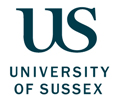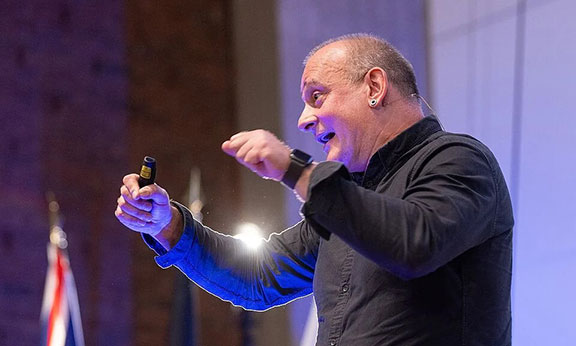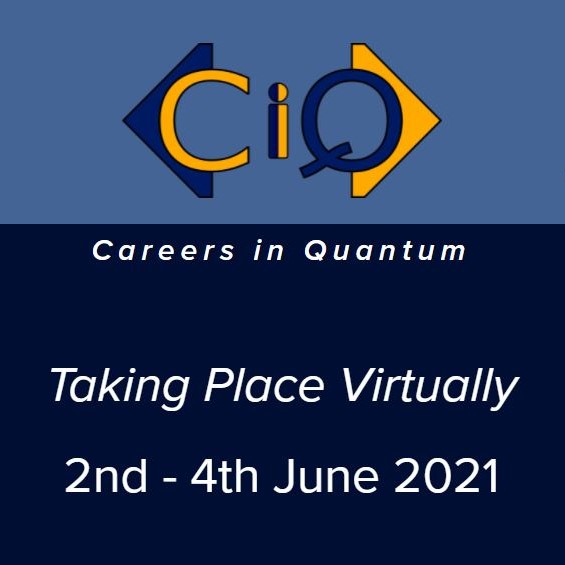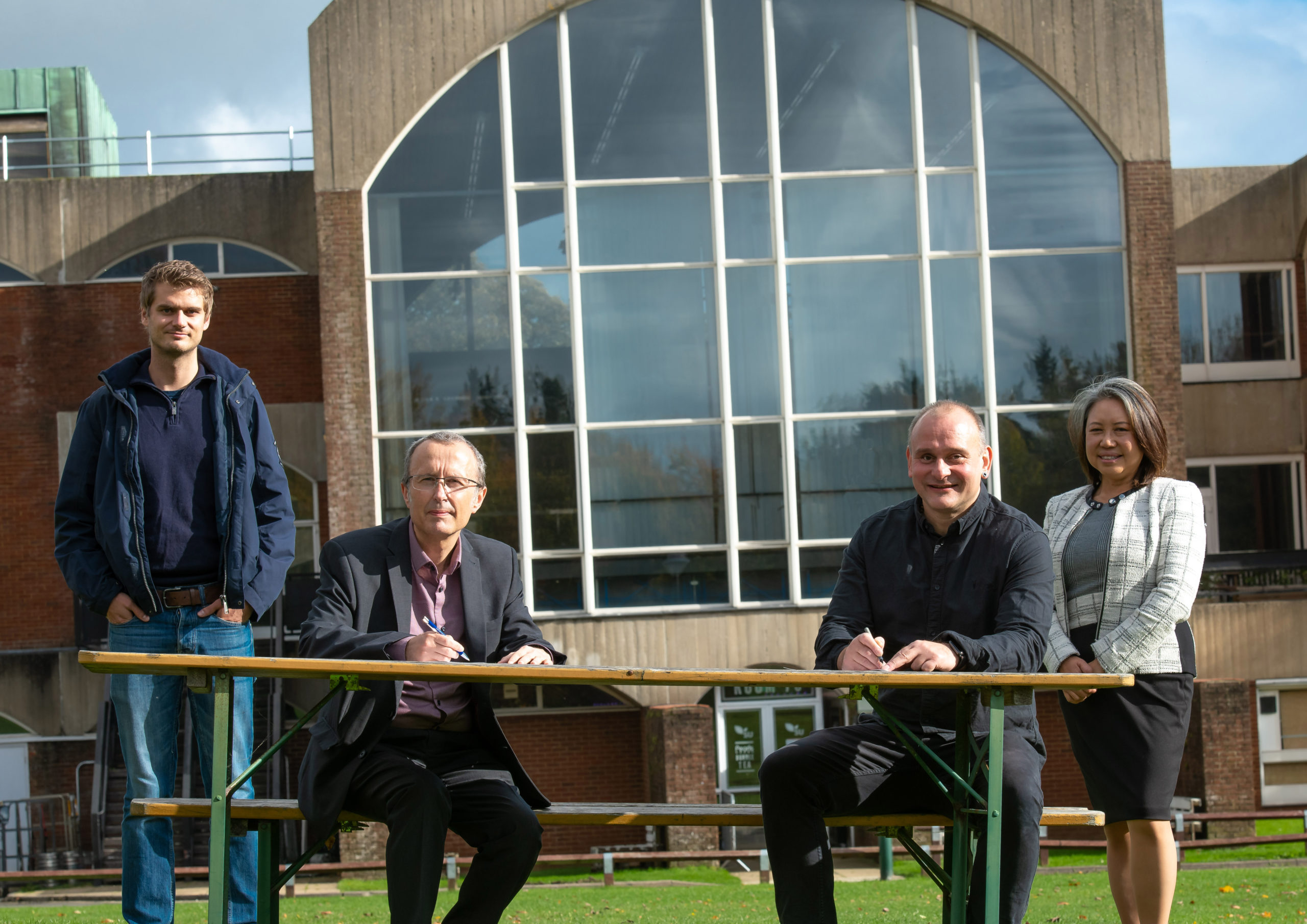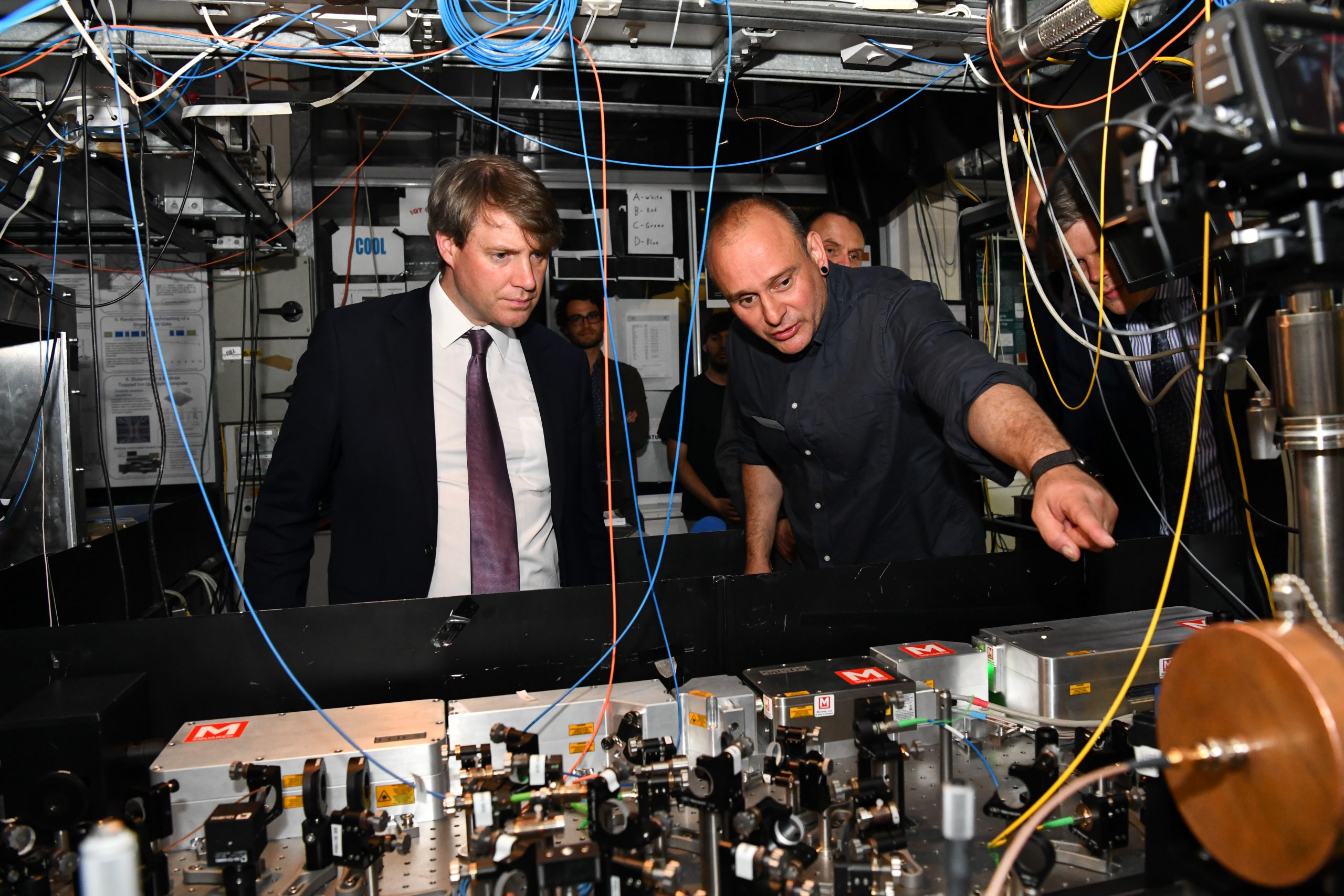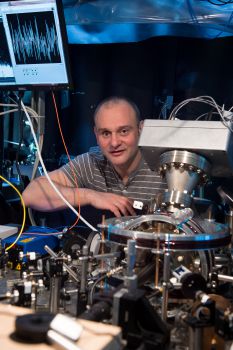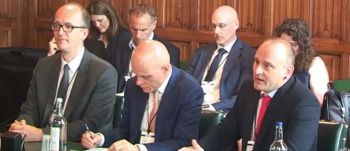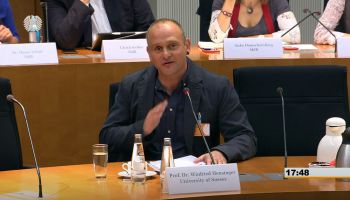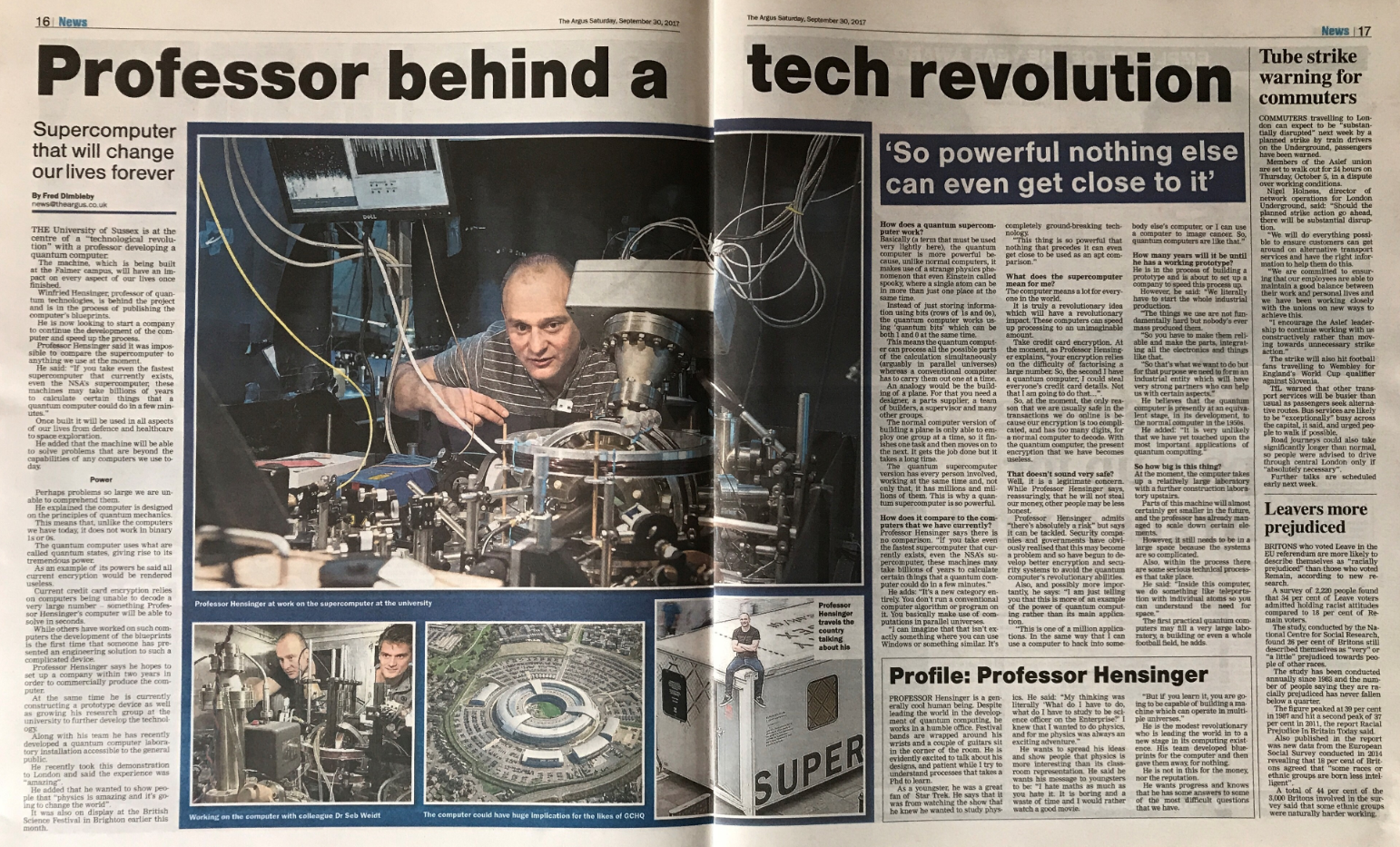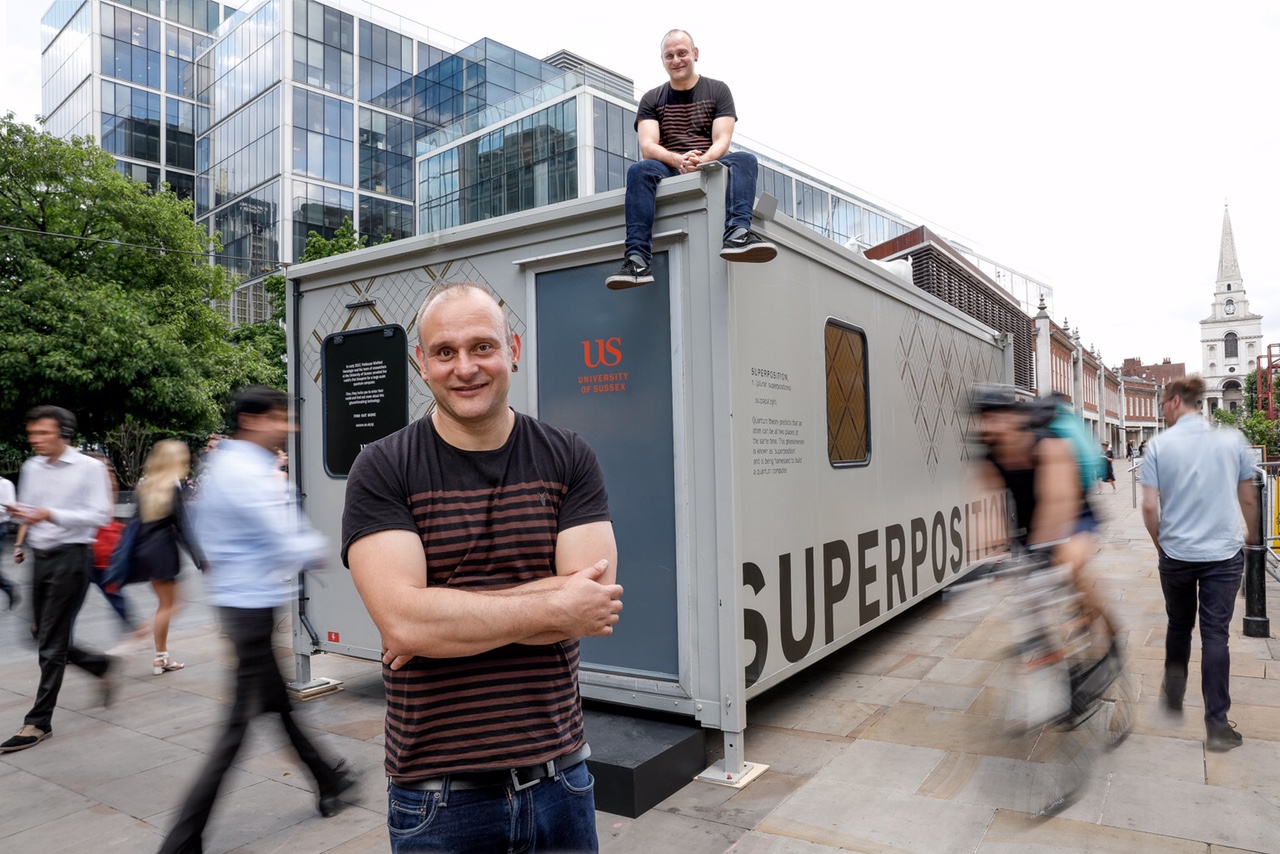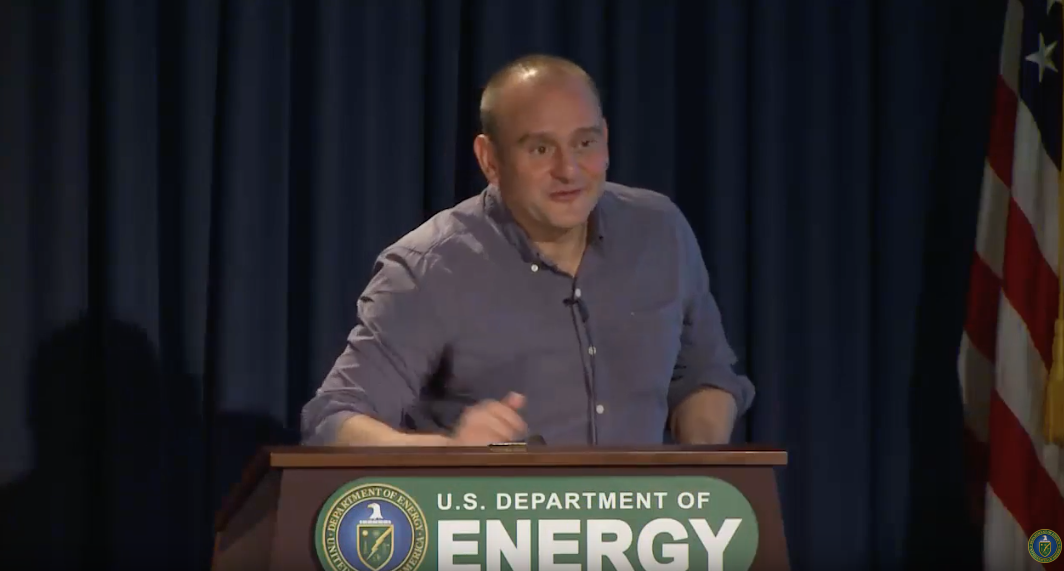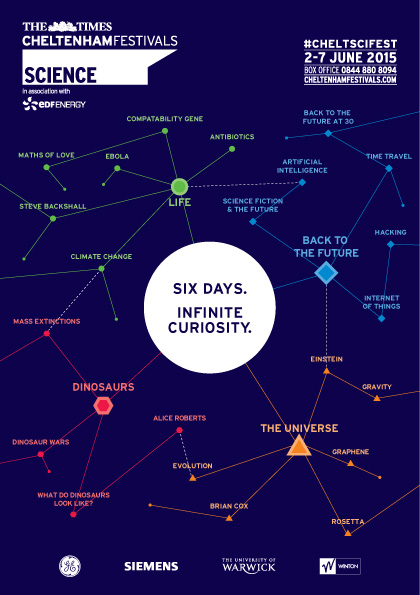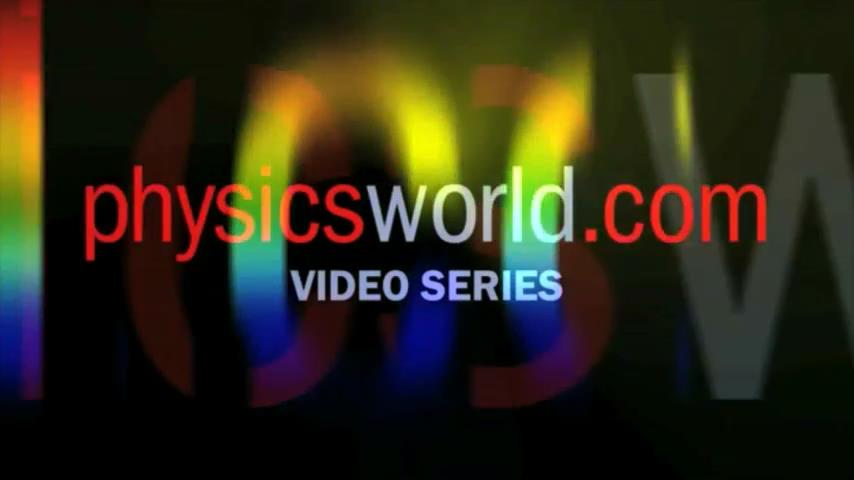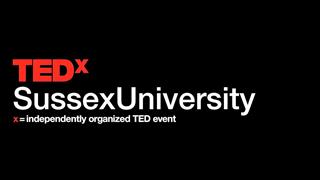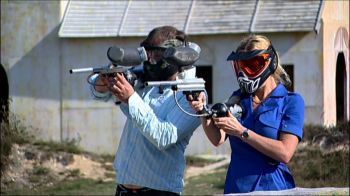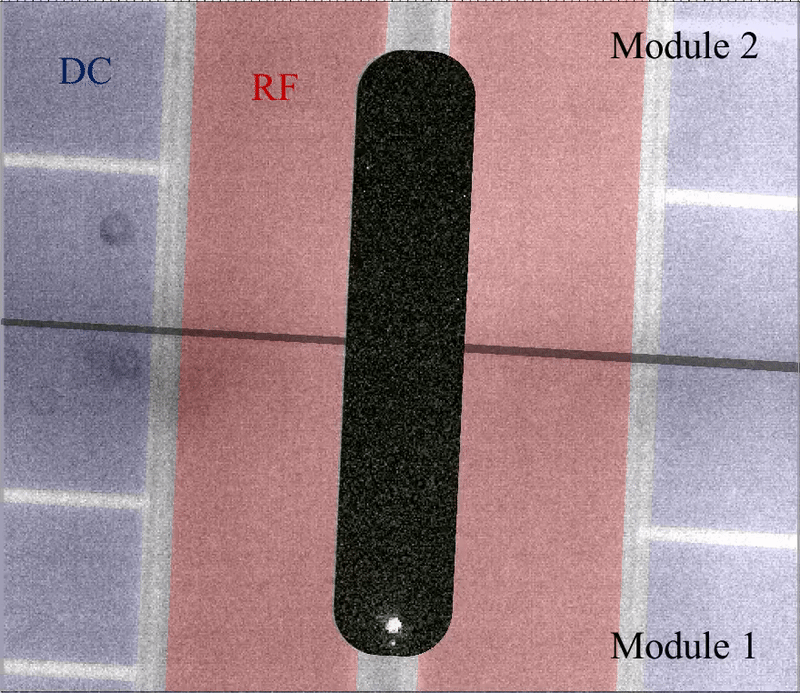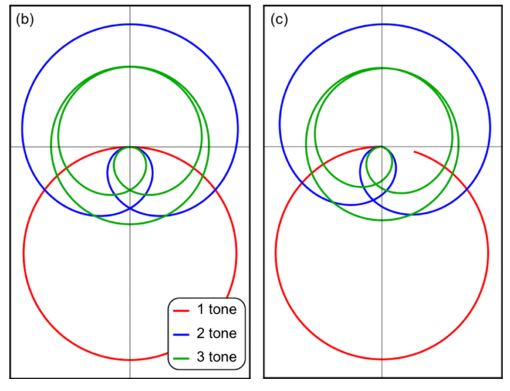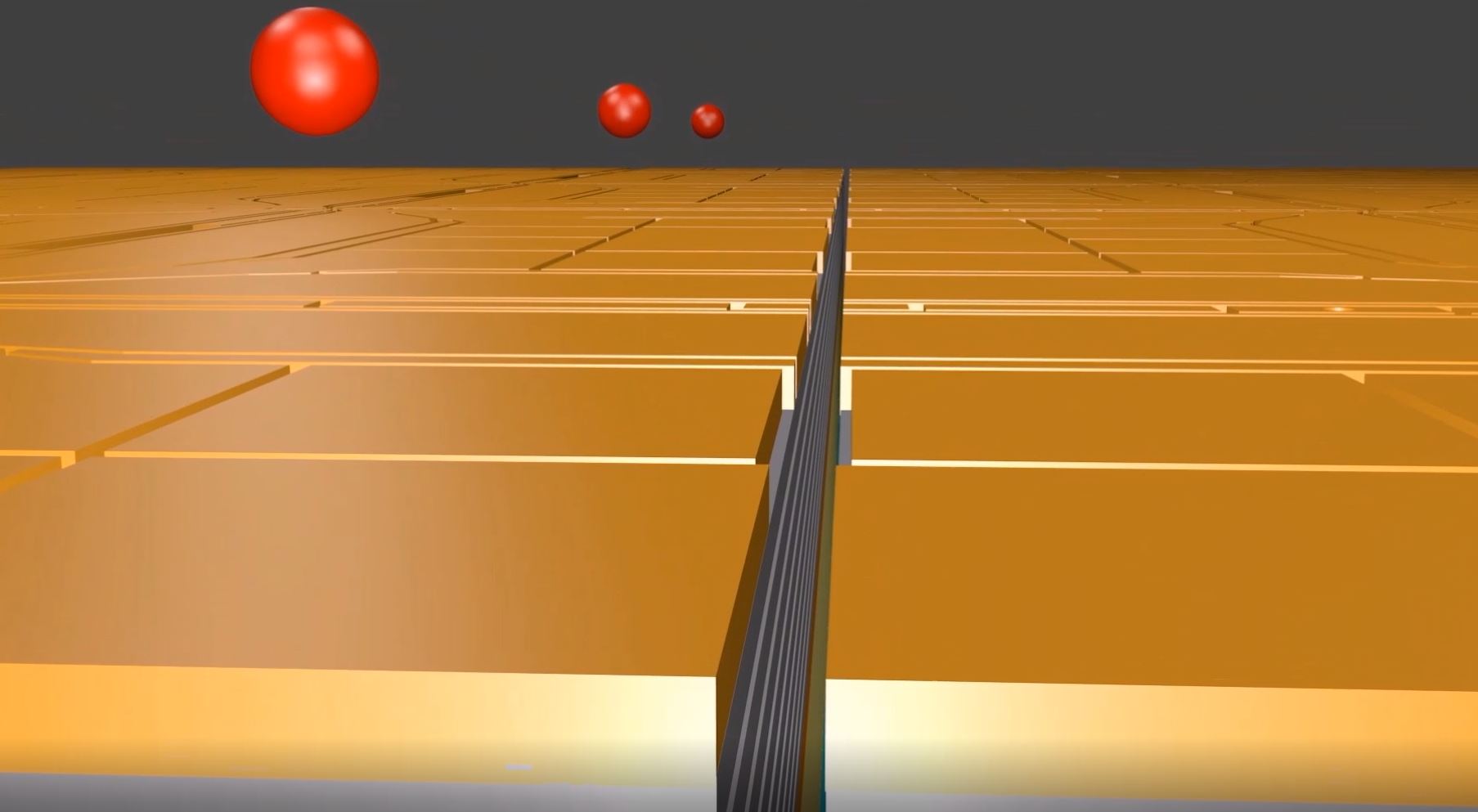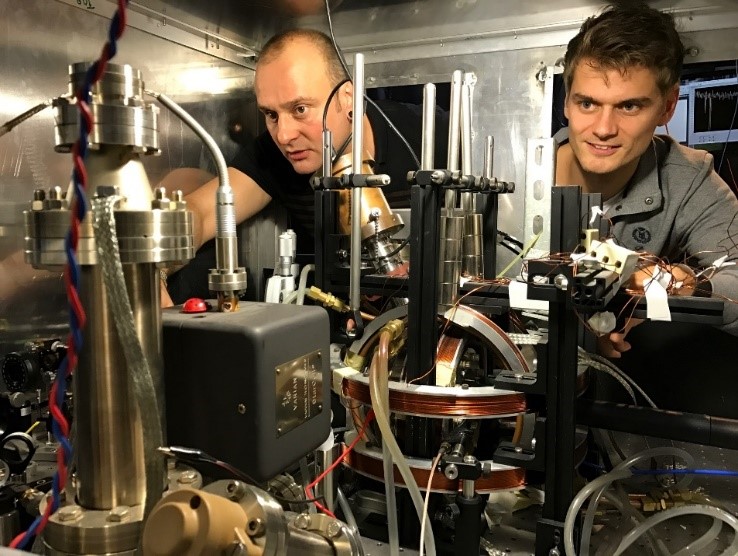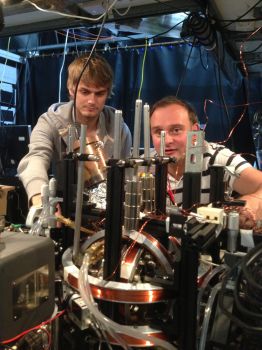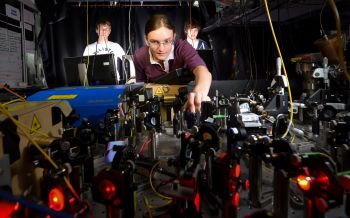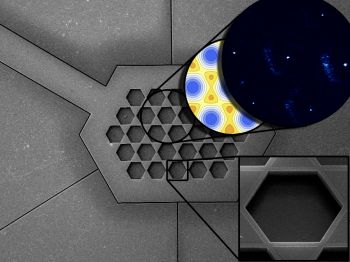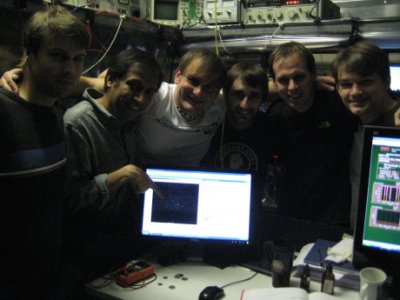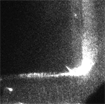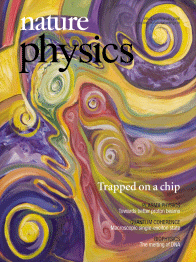Ion Quantum Technology at Sussex
Welcome to the web page of the Ion Quantum Technology group at the University of Sussex, Brighton, UK. The group is headed by Prof. Winfried Hensinger. Our aim is to develop new quantum technologies, in particular, the ion trap quantum computer. For this purpose our research focuses on applied experimental quantum information science and development of new scalable methods to build ion trap arrays and the next generation of large scale entanglement. We are in the process of constructing a quantum simulation engine and a large-scale trapped-ion quantum computer. Another research area is the development of quantum sensors. The group is part of the UK Quantum Technology Hub on Networked Quantum Technologies and the UK Quantum Technology Hub for Sensors and Metrology. The group is part of the Sussex Centre for Quantum Technologies.
More information about our research, grouped by different target groups, can be found in the Research Section. Here you can find videos, explanations, interviews with current students and other useful information.
You can also go on a Virtual Lab Tour exploring our labs and the technology we develop. A good summary of our research in quantum computing can be found here.
The Frontier of Computing
General News
Universities of Sussex and Bristol jointly launch £24m doctoral training centre
The University of Sussex, in partnership with the University of Bristol, has announced that it is to receive millions in funding to launch a brand new quantum technologies Centre for Doctoral Training (CDT). The Centre for Doctoral Training in Quantum Information Science and Technologies was one of 65 new CDTs announced yesterday (Tuesday 12 March) by the Science and Technology Secretary, Michelle Donelan.
It will receive £24 million of funding via the government’s Engineering and Physical Sciences Research Council (EPSRC), industry and other government organisations, as part of wider work to support leading research in areas the government has designated of national importance.
BBC Breakfast: Making quantum computers modular
Researchers from the University of Sussex and Universal Quantum have demonstrated for the first time that quantum bits (qubits) can directly transfer between quantum computer microchips and demonstrated this with record-breaking speed and accuracy. This breakthrough resolves a major challenge in building quantum computers large and powerful enough to tackle complex problems that are of critical importance to society.
The future of quantum computing in academia and industry
Professor Winfried Hensinger presented his personal journey spanning three continents and four countries, in a bid to achieve his goal of building a scalable quantum computer. He discussed the future of quantum computing and quantum technologies in academia and industry at the Careers in Quantum online event on 3 June 2021, organised by the University of Bristol Quantum Engineering Centre for Doctoral Training. You can watch the advice he gave here.
University announces strategic partnership with Universal Quantum
We are happy to announce a strategic partnership with full stack quantum computing company Universal Quantum. Universal Quantum is a spin-out from the Sussex Ion Quantum Technology group. This partnership will allow us to develop and construct practical quantum computers. More information can be found here.
Minister Chris Skidmore visited our lab today
He announced £94M investment for the second phase of UK’s Quantum Technology Hubs which includes funding for the development of microwave trapped ion quantum computing at Sussex
Sussex team wins place in Europe’s bid to win global quantum race
The University of Sussex’s Ion Quantum Technology Group, headed by Professor Winfried Hensinger, has been selected to participate in the European Quantum Technology Flagship initiative. (more…)
Sussex quantum physicist gives evidence to MPs on future of technology
Professor Winfried Hensinger, Director of the SussexCentre for Quantum Technologies and Head of the Sussex Ion Quantum Technology Group appeared before the House of Commons’ Science and Technology Select Committee on 17 July, to give evidence as part of the Committee’s inquiry exploring the opportunities and challenges for new quantum technologies. (more…)
University wins national awards for recruitment and public engagement work
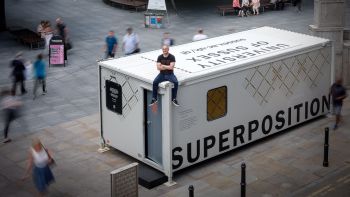
The University of Sussex won both gold and silver at the national HEIST Awards for education marketing in Manchester on Thursday 12 July.
In the category of ‘best community/business engagement campaign’, the University’s delivery of a powerful public engagement event for Quantum Technology received a gold award. (more…)
We’re expanding out team
We are expanding our team! We have a number of PhD and postdoctoral positions available as well as a centre administrator position. More information available here.
Sussex physicist advises German Parliament on quantum computing
Professor Winfried Hensinger, Director of the Sussex Centre for Quantum Technologies and Head of the Sussex Ion Quantum Technology Group, was invited by the German Parliament to testify about the ideas and technology behind quantum computing. (more…)
British Science Fesival
As part of the British Science Fesival we exhibit a walk-in quantum computer model, 5-9 September, 11am until 3.30pm, on Sussex campus. Winfried Hensinger will also give a public lecture on Tuesday September 5th, 2017 14:30 A2, Asa Briggs Arts, University of Sussex campus. Click here for more information.
US Department of Energy’s Cyber Distinguished Speaker Series
Winfried Hensinger was invited to present the US Department of Energy’s Cyber Distinguished Speaker Series lecture to explain quantum computing to US government officials. Click here to watch now
PhD student Anna Webb has won a University-wide competition
PhD student Anna Webb has won a University-wide competition explaining her PhD in just three minutes. A news article describing this achievement can be found here.
March 2016
Four Phd positions in quantum technologies with trapped ions are availalable in the areas of: Microwave Quantum Computing and Simulation with Trapped Ions, Developing a trapped-ion quantum computer demonstrator device, Quantum technology for finance and other commercial applications, Quantum sensing with trapped ions. Info available here.
April 2015
Winfried Hensinger will speak at the this year’s Cheltenham Science Festival on Friday June 5 – ‘Can we build a quantum computer?’.
December 2014
The IQT group at Sussex becomes part of the UK National Quantum Technology Programe, a press release can be found here here).
December 2014
We currently have an opening for a postdoctoral position. More details can be found here. We expect to have further vacancies that will be advertised shortly. If you are interested, please contact Dr.Winfried Hensinger for more information.
December 2014
Phd positions in Quantum Technologies with trapped ions are available. There are a number of positions availalable in the areas of microwave quantum logic, quantum simulation and quantum sensing (info available here).
October 2013
Book author John Gribbin, Biolologist Laurence Pearl, PhD student Kim Lake and Winfried Hensinger give a short introduction to quantum computing for the Physics World special about 5 physics spin-offs that will change our lives.
August 2013
Details on the 1st Workshop on Quantum Simulations with Trapped Ions (IQSim13), to be held 16-19 December in Brighton can be found here.
August 2013
We redeveloped our virtual lab tour. You can access it here.
June 2013
Marcus Hughes passes his viva and is awarded the degree of Doctor of Philosophy.
June 2013
Chris Reed is awarded the prize for the best BSc. project in the Department of Physics & Astronomy at Sussex.
June 2013
Seb Weidt is awarded the EPSRC doctoral prize for his outstanding PhD work.
January 2013
The Sussex Ion Quantum Technology group is featured in EPSRC’s Pioneer magazine, you can find the article here, see p.18 and 19.
October 2012
Come and explore Ion Quantum Technology research at Sussex using our new interactive display, located in the Pevensey 2 building right in front of the IQT lab.
October 2012
PhD position available. You can find more information here. Application deadline is 20 December 2012 (applications after this deadline may be considered if position is not filled).
January 2012
James Siverns successfully defends his thesis on 12 January.
November 2011
Robin Sterling successfully defends his thesis on 30 November.
October 2011
James McLoughlin successfully defends his thesis on 25 October.
October 2011
Interview on the Breakfastshow on BBC Sussex Radio with Winfried Hensinger. A recording can be found here.
August 2011
Dr Altaf Nizamani is awarded the degree of Doctor of Philosophy on 6 August.
June 2011
James McLoughlin submits his doctoral thesis on 1 June.
June 2011
James Siverns submits his doctoral thesis on 30 June.
June 2011
The IQT group received a grant from the Sussex Enterprise Development Fund for another commercialisation project.
May 2011
Altaf Nizamani successfully defends his thesis on 6 May.
May 2011
Robin Sterling submits his doctoral thesis on 20 May.
February 2011
Altaf Nizamani submits his doctoral thesis on 21 February.
January 2011
There will be a special Issue on “Ion Trapping” in Applied Physics B – Lasers and Optics, edited by Winfried Hensinger, Danny Segal and Richard Thompson. Details can be found here. Submission deadline is 30 April 2011.
October 2010
Postdoctoral research fellow / associate position in Trapped Ion Quantum Technology and Nano-science is available. More details can be found here.
July 2010
The Ion Quantum Technology Group is featured in the 2010 University of Sussex Research Review.
January 2010
Details on the 2010 European Conference on Trapped Ions (ECTI 2010) can be found here.
December 2009
A 3.5 year PhD position is available. More details can be found here.
June 2009
The IQT group received a grant from the Sussex Enterprise Development Fund to commercialize a specialized laser.
June 2009
Ben Jacques-Parr is the recipient of the departmental Pamela Rothwell prize for an outstanding BSc. research project.
October 2008
Winfried Hensinger has been appointed London Technology Network Business Fellow to foster links between university research and industry.
July 2008
Winfried Hensinger has been awarded an EPSRC Leadership Fellowship with full economic cost value of £1.4M for the development of quantum technology with nanofabricated ion trap chips. A postdoctoral position (up to 5 years) and a number of PhD scholarships are available. Please get in touch if you are interested.
June 2008
Marcus Hughes is the recipient of the departmental prize for an outstanding Master of Physics research project.
March 2008
Rajiv Ramasawmy is featured on the cover of the departmental prospectus featuring lasers in the mist (in our lab).
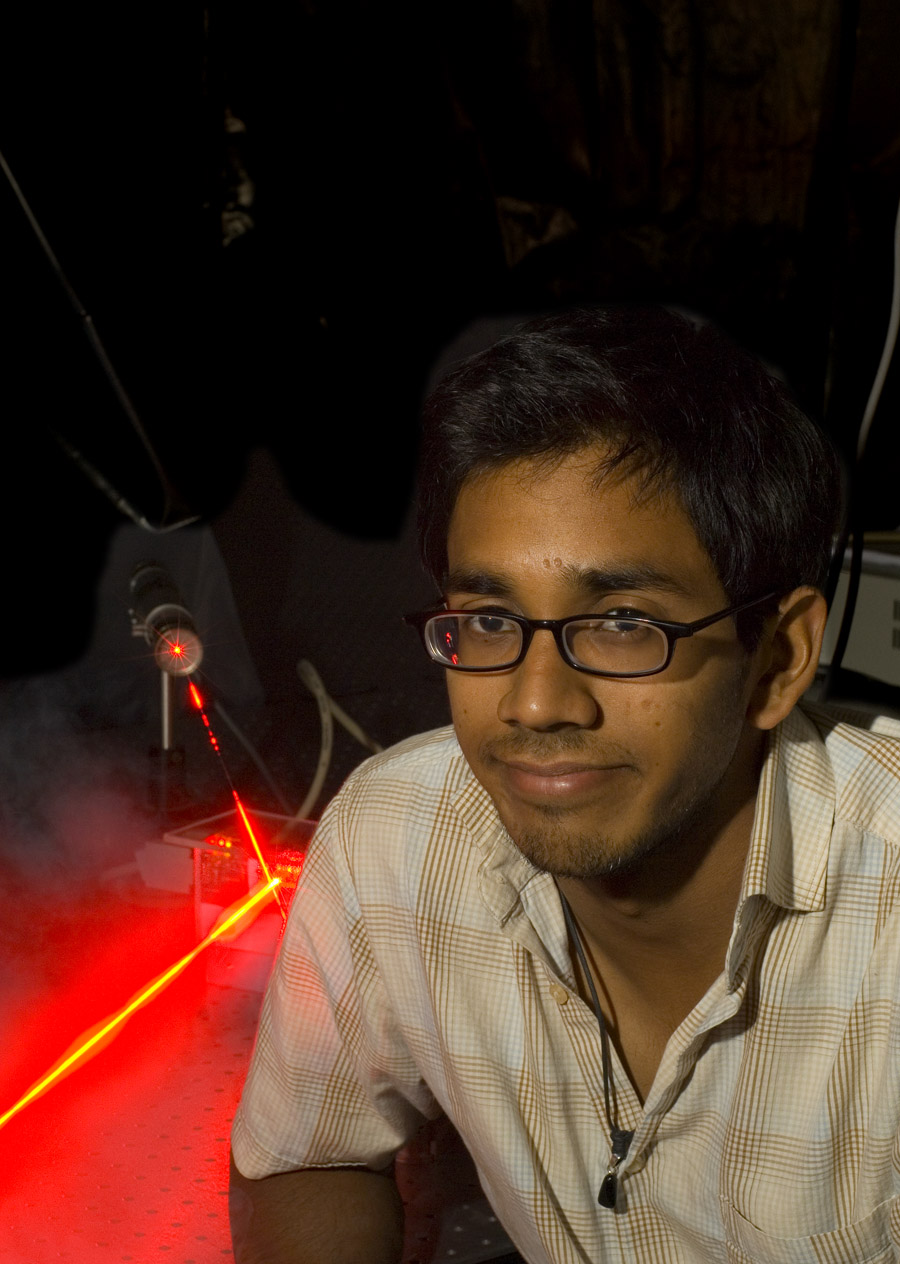
March 2008
Interview with Winfried Hensinger on UK Future TV about the general research directions of the group.
July 2007
Jessica Grove-Smith is the co-recipient of the departmental prize for an outstanding Master of Physics research project.
June 2007
First lasers are operating and the overhang for the optical table is completed.

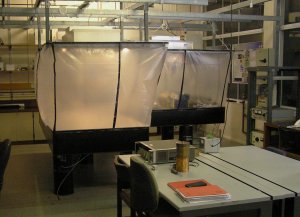
April 2007
Dan Brown, Nik Davies, Jack Friedlander, Jessica Grove-Smith, Ben Pruess, David Scrivener and Tim Short successfully complete their undergraduate research projects.
5th March 2007
The optical table has arrived.
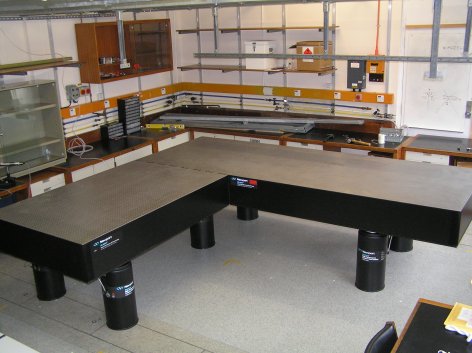
1st October 2006
4 graduate students and 8 undergraduate research project students join the group.
1st July 2006
Lab is nearly finished, equipment will be ordered soon.
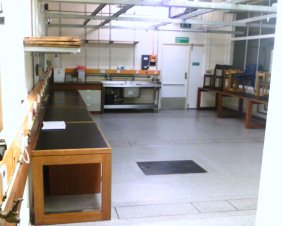
10 December 05 until March 2006
Collaborative research at the University of Michigan
23 September 2005
Arrival at Sussex
Science News
Quantum Control Methods for Robust Entanglement of Trapped Ions
We show how one can make use of a wide range of quantum control methods to raise fidelities and robustness of two-qubit gates with trapped ions.
The paper was published on 27 September 2022 in Journal of Physics B: Atomic, Molecular and Optical Physics.
Manuscript: Quantum Control Methods for Robust Entanglement of Trapped Ions.
A High-Fidelity Quantum Matter-Link Between Ion-Trap Microchip Modules
We present the demonstration of a quantum matter-link in which ion qubits are transferred between adjacent QC modules. Ion transport between adjacent modules is realised at a rate of 2424 1/s and with an ion-transfer fidelity in excess of 99.999993%. Furthermore, we show that the link does not measurably impact the phase coherence of the qubit. The realisation of the quantum matter-link demonstrates a novel mechanism for interconnecting quantum computing modules. This achieves a key milestone for the implementation of modular quantum computers capable of hosting millions of qubits. Published on 8 February in Nature Communications.
University of Sussex Press Release
Manuscript: A High-Fidelity Quantum Matter-Link Between Ion-Trap Microchip Modules
The Impact of Hardware Specifications on Reaching Quantum Advantage in the Fault Tolerant Regime
We have determined how a quantum computer could break the encryption of Bitcoin and simulate the FeMo-co molecule, a crucial molecule for Nitrogen fixation. We show that in certain situations, architectures with considerably slower code cycle times will still be able to reach desirable run times, provided enough physical qubits are available. Four years ago, we estimated that a trapped ion quantum computer would need a billion physical qubits to break RSA encryption equating to a size 100m2. With innovations across the board, the size of such a quantum computer would now just need to be 2.5m2.
The paper was published on 25 Jan 2022 in AVS Quantum Science.
Manuscript: The Impact of Hardware Specifications on Reaching Quantum Advantage in the Fault Tolerant Regime
Press release: Sussex Scientists Reveal how Quantum Computing can Break Bitcoin and Help Tackle World Hunger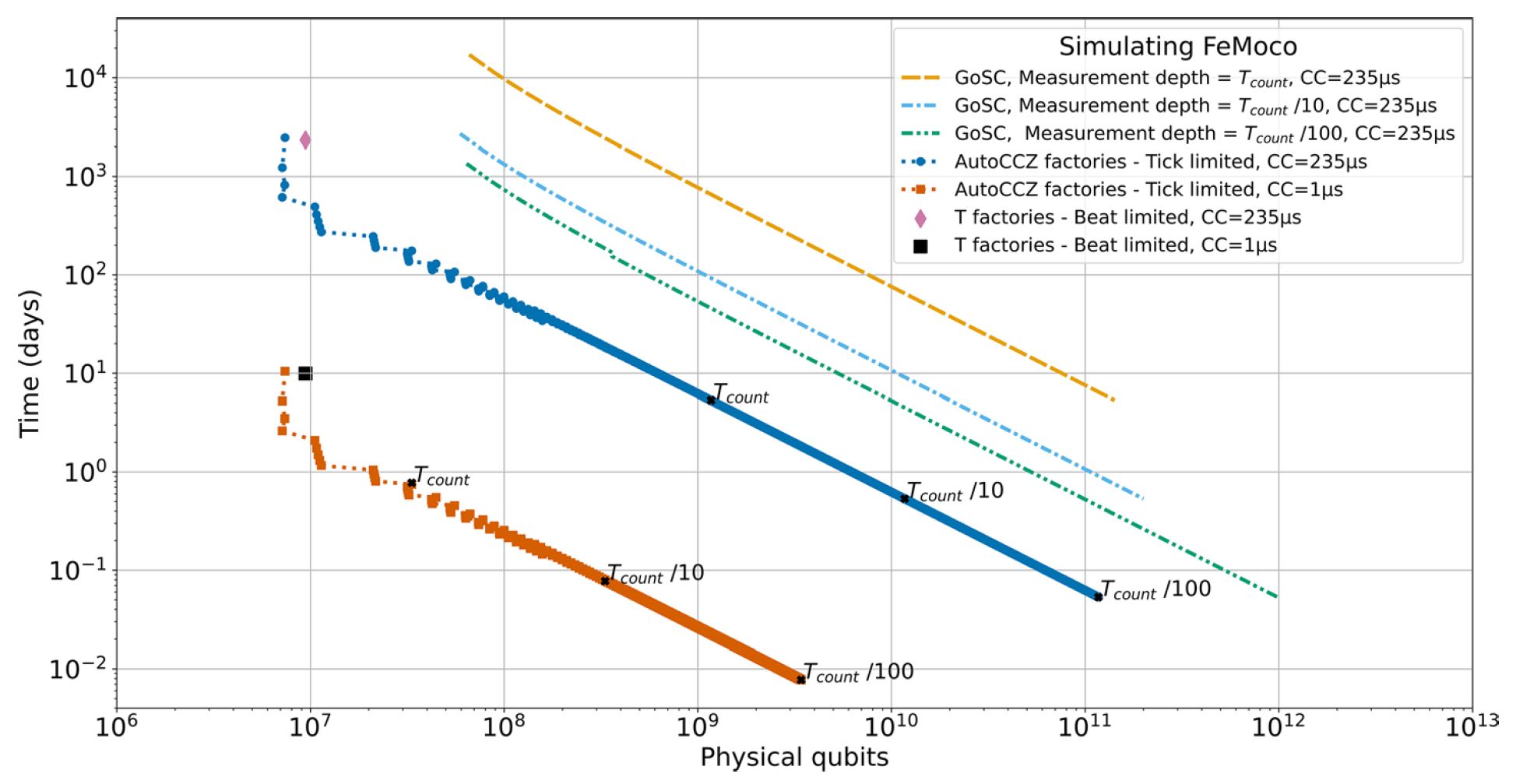
Robust Entanglement by Continuous Dynamical Decoupling of the J-Coupling Interaction
We propose a new microwave gate which uses the intrinsic J-coupling of ions in a static magnetic gradient. The gate is virtually insensitive to common amplitude noise of the microwave fields and enables high fidelities despite qubit frequency fluctuations, while the J-coupling interaction’s inherent robustness to motional decoherence is retained. Errors far below the fault-tolerant threshold can be achieved at high initial temperatures, negating the requirement of sideband cooling below the Doppler temperature.
Manuscript : Robust Entanglement by Continuous Dynamical Decoupling of the J-Coupling Interaction
A Scalable Helium Gas Cooling System for Trapped-Ion Applications
Microfabricated ion-trap devices offer a promising pathway towards scalable quantum computing. Addition of on-chip features, however, increases the power dissipated by components such as current-carrying wires and digital-to-analogue converters (DACs). Presented here is the development of a modular cooling system designed for use with multiple ion-trapping experiments simultaneously enabling efficient cooling to 70K while provide significant and scalable cooling power.
Manuscript: A Scalable Helium Gas Cooling System for Trapped-Ion Applications
Efficient Qubit Routing for a Globally Connected Trapped Ion Quantum Computer
The cost of enabling connectivity in Noisy-Intermediate-Scale-Quantum devices is an important factor in determining computational power. A particular architecture for trapped-ion quantum computing relies on shuttling ions. An efficient ion routing algorithm has been created along with an appropriate error model, which can be used to estimate the achievable circuit depth and quantum volume as a function of experimental parameters.
Our paper has been published in Advanced Quantum Technologies 3, June 2020 Efficient Qubit routing for a globally connected trapped ion quantum computer
University of Sussex Research News press release, August 2020 Sussex study enables predicting computational power of early quantum computers
Engineering of Microfabricated Ion Traps and Integration of Advanced On-Chip Features
Ion trap microchips form the core of many quantum technologies, in particular, the trapped ion quantum computers. We provide an overview of state-of-the-art microfabrication techniques, as well as various considerations which motivate the choice of materials and processes. Finally, we discuss current efforts to include advanced, on-chip features into next generation ion traps. Our paper has been published in Nature Review Physics, June 2020.
Manuscript: Engineering of Microfabricated Ion Traps and Integration of Advanced On-Chip Features
Resilient entangling gates for trapped ions
Building a practical quantum computer with large numbers of qubits will require quantum gates that are robust in the presence of fluctuations in operational parameters. In addition, motional heating of trapped ions will lead to a reduced entangling gate fidelity. (more…)
Generation of high-fidelity quantum control methods for multi-level systems
We introduce a powerful technique to transform all existing two-level quantum control methods to new multi-level quantum control methods. We illustrate the technique by coherently mapping between two different qubit types with error well below the relevant fault-tolerant threshold, creating another important tool towards constructing a large scale quantum computer. (more…)
Blueprint for a microwave trapped-ion quantum computer
We unveil the first industrial blueprint on how to build a large-scale quantum computer. The work features a new invention permitting actual quantum bits to be transmitted between individual quantum computing modules in order to obtain a fully modular large-scale machine. The work is published in Science Advances. (more…)
Trapped-ion quantum logic with global radiation fields
We describe a new approach for trapped-ion quantum computing based on the application of global radiation fields and voltages applied to individual gate zones. Using this technique we demonstrate a two-qubit quantum gate producing a maximally entangled state with fidelity close to the fault-tolerant threshold. This quantum gate also constitutes a simple-to-implement tool for quantum metrology, sensing and simulation. (more…)
Ground-state cooling of a trapped ion using long-wavelength radiation
We demonstrate ground-state cooling of a trapped ion using long-wavelength radiation. This is a powerful tool for the implementation of quantum operations, where long-wavelength radiation instead of lasers is used for motional quantum state engineering.
Published in Physical Review Letters.
Manuscript: Ground-state cooling of a trapped ion using long-wavelength radiation
Multi-qubit gate with trapped ions for microwave and laser-based implementation
We propose a new quantum gate utilizing microwave radiation and dressed states that is highly robust to decoherence making it an attractive candidate for the implementation of high-fidelity microwave quantum logic. Published in the New Journal of Physics.
Manuscript: Multi-qubit gate with trapped ions for microwave and laser-based implementation
Efficient preparation and detection of microwave dressed-state qubits and qutrits with trapped ions
We have developed a new method to efficiently prepare dressed state qubits and qutrits, thereby significantly reducing the experimental complexity of gate operations with dressed-state qubits. Dressed states are well protected from noise making them ideal for use in many quantum technology applications. Published in Physical Review A and selected as ‘Editor’s Suggestion’.
Generation of spin-motion entanglement in a trapped ion using long-wavelength radiation
We demonstrate spin-motion entanglement using longwave radiation. This is a critical step towards the experimental realisation of high-fidelity two-qubit gates using microwaves rather than laser radiation. Published in Physical Review A.
Manuscript: Generation of spin-motion entanglement in a trapped ion using long-wavelength radiation
Fabrication and operation of a two-dimensional ion-trap lattice on a high-voltage microchip
Demonstration of the first two-dimensional ion lattice integrated on a microchip. We realize a two-dimensional ion-trap lattice on a microchip using a new fabrication method that allows very-high voltages to be applied to the chip, enabling very deep ion traps. Published in Nature Communications.
Optimisation of two-dimensional ion trap arrays for quantum simulation
Article on how to create optimal two-dimensional ion trap arrays for quantum simulation, published in New Journal of Physics (14 August 2012)
Manuscript: Optimisation of two-dimensional ion trap arrays for quantum simulation
On the application of radio frequency voltages to ion traps via helical resonators
Article on the application of radio-frequency voltages to ion traps via helical resonators, published in Apl. Phys. B (17 January 2012).
Manuscript: On the application of radio frequency voltages to ion traps via helical resonators
Microfabricated Ion Traps
Article on the principles and operation of microfabricated ion traps including material considerations, a guide to the appropriate fabrication design, details of different fabrication processes and a summary of previously realized structures, published in Contemp. Phys. (14 Sept. 2011).
Optimum electrode configurations for fast ion separation in microfabricated surface ion traps
Article on how to create optimal electrode configurations for separation and trap depth in surface ion traps, published in Applied Physics B (28 Nov. 2011)
Versatile ytterbium ion trap experiment for operation of scalable ion-trap chips with motional heating and transition-frequency measurements
Article on design and operation of an ytterbium ion trap experiment with a setup that can host advanced surface and multilayer ion trap chips. We make a heating rate measurement and provide transition frequency measurements more precise than previously published work, published in Phys. Rev. A (21 Jan. 2011)
Doppler-free Yb Spectroscopy with Fluorescence Spot Technique
Article on Dopper-free Yb spectroscopy of Yb using a fluorescence spot technique providing frequency measurements that differ from previous published work and allowing to determine the average velocity of atoms along an atomic beam, published in Phys. Rev. A (8 Oct. 2010)
Manuscript: Doppler-free Yb Spectroscopy with Fluorescence Spot Technique
Single ytterbium ions are trapped in an experimental setup
Single ytterbium ions are trapped in an experimental setup particularly designed for the development of advanced ion trap chips. This setup allows for rapid turn-around time, optical access for all type of ion trap chips and up to 100 electric interconnects. The particular ion trap used features an ion – electrode distance of 300 microns and we observed an ion life time of more than 1 hour.
On the Transport of Atomic Ions in Linear and Multidimensional Ion Trap Arrays
Article on the transport of ions in large scale multi-dimensional ion trap arrays is published in “Quantum Information & Computation”.
Manuscript: On the Transport of Atomic Ions in Linear and Multidimensional Ion Trap Arrays.
Measurement of motional decoherence scaling for an ion trap with moveable electrodes
September 06
Measurement of motional decoherence scaling for an ion trap with moveable electrodes, demonstrated significant suppression of patch potential heating, demonstrated ion trap with 23 microns ion-electrode spacing in experiments at the University of Michigan published in Physical Review Letters.
Efficient photoionization of neutral atoms
Efficient photoionization of neutral atoms with pico- and nanosecond pulses for loading ion traps.
First two-dimensional shuttling operations including corner-turning and swapping two ions inside a T-junction
Experiments carried out at the University of Michigan reporting first two-dimensional shuttling operations including corner-turning and swapping two ions inside a T-junction published in Applied Physics Letters.
Ion trap in a semiconductor chip
Integrated ion chip experiments at the University of Michigan published in Nature Physics.
